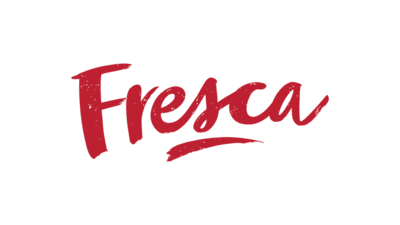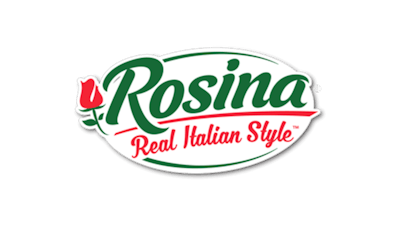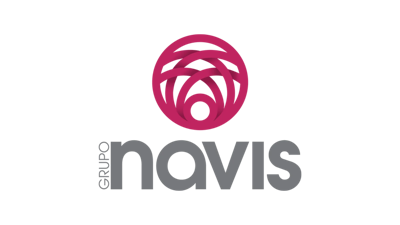COVID-19 has introduced complexity and pressures for every industry, but Process Manufacturing in particular has been affected in tremendous ways. From disrupted supply chains to the CDC’s rapidly evolving health and safety guidelines, the industry continues to face major changes that call for agility and innovation. For a leading food service company, quick thinking and technology made it possible to meet each new challenge as it emerged. This guide details how the company stayed ahead of the pressures created by COVID-19. In the coming pages, we’ll discuss:
- How SafetyChain technology enabled the company to handle the changes brought on by the pandemic
- The training and communication strategies used to roll out a new form for safety checks
- How the company quickly complied with changing CDC guidelines
- What challenges their teams faced prior to using SafetyChain
- The advantages, impact, and results of leveraging technology
- Lessons learned and advice for fellow SafetyChain users
Let’s begin by looking at how the company faced COVID-related changes using technology.
4 Ways SafetyChain Helped Overcome Changes Created by COVID-19
As soon as they began receiving guidance about the pandemic, the food service company immediately began looking at their fourteen manufacturing facilities. They took note of zones where people were working and their existing processes. Immediately realizing no manufacturing plant was made to handle social distancing rules, the changes in compliance audits they’d need to implement were many, and using paper simply wouldn’t be the best approach. Paper is temporary, and while it may work for collecting information, it wouldn’t support fast trending or report quickly on compliance. They needed a way to look at information collectively so they could target the areas where changes were needed.
By implementing electronic forms using SafetyChain Software, their team was able to meet the major CDC guidelines that applied to their plant. They used the forms to perform checks, ensuring all employees were wearing personal protective equipment (PPE), adhering to social distancing requirements, and washing their hands regularly. In addition, they later added checks for fans that blew across work stations in response to another changing guideline.
SafetyChain allows for customized forms to be created. Management quickly leveraged this feature to create an auditing checklist that employees could use to ensure CDC guidelines were being followed on the floor. Within a matter of days, the form was rolled out and adopted across their facilities.
Agility: Training & Communicating
Using paper for quality, safety, and compliance checks seems like the easiest route, but responding quickly to the safety guidelines imposed by the COVID-19 pandemic called for a much more agile solution. After creating the form and testing it to make sure it worked, the company’s senior corporate quality engineer recorded a short video with step-by-step instructions for accessing and completing the form.
Employees could watch the instructional video as they went through the form, which made implementation quick and simple. Plus, having SafetyChain as a user-friendly app also gave teams a smooth solution they could begin using immediately without the need for extensive training. As one company leader puts it, this couldn’t be a project; it was an initiative that had to take place quickly.
Innovation: Meeting Environmental Health & Safety Directives
One of the major advantages of SafetyChain Software is its flexibility: administrators can make changes as they need without IT help. In the case of COVID-19 response efforts, this feature has been particularly useful. Recommendations were frequently updated; for instance, several weeks after the initial social distancing and PPE advisories were issued, the CDC rolled out airflow directives. With SafetyChain’s software, adding this new check to the existing audit form was simple.
Typically an Environmental Health & Safety protocol requiring separate software, airflow questions were added to the compliance checks so employees could evaluate specific zones within their facilities. They checked whether fans were running over multiple employees and whether the directions needed to be changed. Adding the question to their standard form prevented the need for separate audits; the teams running the existing audits could simply check for airflow during their routine assessments. After only a few days of audits and checks, the company removed that question from the form, and they had auditable proof of where fans were, and could now approach the guideline more quickly.
Standardization Across Facilities
As guidelines were published, republished, and adjusted, the company was able to implement standardized checks across all of their facilities. Each of their plants has been able to perform checks to ensure employees are wearing their PPE, practicing social distancing, and washing hands. And, with the results that would come in from checks, upper management could identify trouble spots and make changes as needed. Not only could they intervene when specific plants or zones were not in compliance, but they could also use the results to compliment teams that were doing well. Both compliances and non-compliances were used as discussion points in shift meetings.
SafetyChain gave leadership teams the ability to have instant visibility into compliance with CDC guidelines. The CEO saw real-time results on the mobile app, and knew that the safety and quality teams and engineers had operations fully in control. He even called to thank them for their hard work.
Challenges Prior to Offering SafetyChain as a Solution
Like other Process Manufacturing companies, the food service company has roots that extend back many decades. Having been established in the 1950s, it has a longstanding legacy of excellence, along with certain processes that were comfortable and familiar to employees. For instance, they used to rely on paper-based systems for a number of reasons. It’s seen as a mobile system since it works for gathering information from the floor. Yet, it requires another app to analyze, chart, and trend the data that lives on the paper, which adds time to an already time-sensitive process. Moreover, not everyone on the floor could get to a computer when they needed to upload data or track down an important file. Because it can be used on mobile devices, SafetyChain can be accessed by operators from any line or shift, at any time.
Plus, as the company’s senior corporate quality engineer points out, “Paper is temporary; it gets filed away in a drawer where it serves no real value.” It’s also more difficult to sanitize than tablets and other mobile devices, which can simply be wiped down.
The company also needed a solution that would allow them to make swift changes on a day-to-day basis — not just related to COVID. They knew that having checks on their forms that were no longer relevant because equipment had been removed or the process had been altered was a waste of time. Similarly, since data reveals what metrics are most important to focus on, they needed a system where new questions could be added as potential areas of opportunity for improvement arose.
When it came to kickstarting their implementation of a paperless system, “COVID moved the needle along quicker,” said the senior corporate quality engineer. Users caught on quickly to the features of the electronic forms, including how to share and store files.
SafetyChain has also benefited the food service company because it enforced standardized data collection. While different plants might have had unique terminology, using a shared system allowed everyone to adopt the same form to collect the same critical information.
Resilience: Advantages, Impact, & Results
COVID-19 affected more than just the work lives of employees; like everyone else, they were feeling the mental exhaustion that came with the pandemic and its challenges. By implementing SafetyChain, the company was able to not only accelerate their response but also eliminate some of the mental hurdles of maintaining a safe workplace. The forms simplified checks for their teams and offered real-time reporting without the need to physically put the data together. “The story was already there for us,” said one company leader, about the automatic reporting from the new form.
Since social distancing is challenging in any manufacturing environment, SafetyChain has also enabled visibility into plants so that leaders can enforce the guidelines and drive change. With the software’s charts and trends, they have a clear view of how they managed risks at first versus where they are now, even in the face of changing requirements. The trending of data has allowed them to see where they need to go so they can continue to have complete confidence in the safety of their plants. Having performed more than 73,000 audits across all of their facilities in six months, they know they’re not simply checking boxes; they’re gathering and interpreting the data that enables them to think ahead and keep their brand safe.
Lessons Learned
One of the most important takeaways the team has gathered from this experience is that you must keep an open mind and think outside the box. According to the company’s senior corporate quality engineer, “One thing that COVID did teach us is that we can’t be comfortable. We have the ability to make changes quickly.”
Projects can be lengthy, but the pandemic response called for swift action. The leadership team knew that the implementation of a new form could be achieved quickly with SafetyChain. The platform allows for flexibility, including the option to modify questions as needed. Their story proves that standardizing terminology and having access to real-time results drives results and changes behaviors. While it takes time to change a company culture, implementing a standardized solution can get you there — especially if you have one facility that can be a cheerleader for the system and encourage others to see its advantages.
Of course, the benefits aren’t just exclusive to the company’s COVID-19 response. On the productivity side, their lines are also performing better. Having access to real-time performance metrics can breed a healthy sense of competition, further driving better products and processes and supporting a positive cultural shift.
Advice for Other SafetyChain Customers
Company leaders approached SafetyChain with the mindset that they wanted to consolidate the number of systems they were using for QMS, having no thought of other possibilities. Yet, they ultimately discovered uses that they didn’t even know they needed. Thus, the importance of keeping an open mind as you leverage plant management software cannot be overstated. As they’ve evaluated their processes, they’ve begun pulling even more data into SafetyChain, which has allowed them to focus on what’s absolutely necessary, versus any steps that are redundant and can therefore be eliminated. Because of the platform’s reporting capabilities, they’re able to identify needs that were otherwise buried in isolated paper data sets.
Their team recommends gathering all of your facility’s paper, looking at electronic forms, and talking to your employees to determine what key pieces of data are central to your operations. Once you think you have all of the information, ask them again. Sometimes, having employees walk you through their day-to-day responsibilities can remind them of an important step that needs to be captured.
Summary
The COVID-19 pandemic has forced Process Manufacturing companies to adopt creative solutions that allow them to face complexities as they arise. With innovation and agility, a leading food service brand has not just weathered challenging circumstances; they’ve emerged even stronger. In addition to fulfilling CDC safety guidelines, they now have better insight into plant performance, have boosted line performance, and can respond rapidly to changing regulations.
The access to critical performance data provided by SafetyChain has also revealed new areas of opportunity for the company. Swiftness is something all Process Manufacturing companies need in order to respond to consumer-driven shifts, supply chain changes, and regulatory developments, among other factors. With the platform’s advanced trending and reporting features, the company can continue to focus on the data that matters most. Thus, even when COVID-related threats subside, forward-thinking companies will continue to use technology to their advantage to meet new goals and overcome any unexpected challenges.


